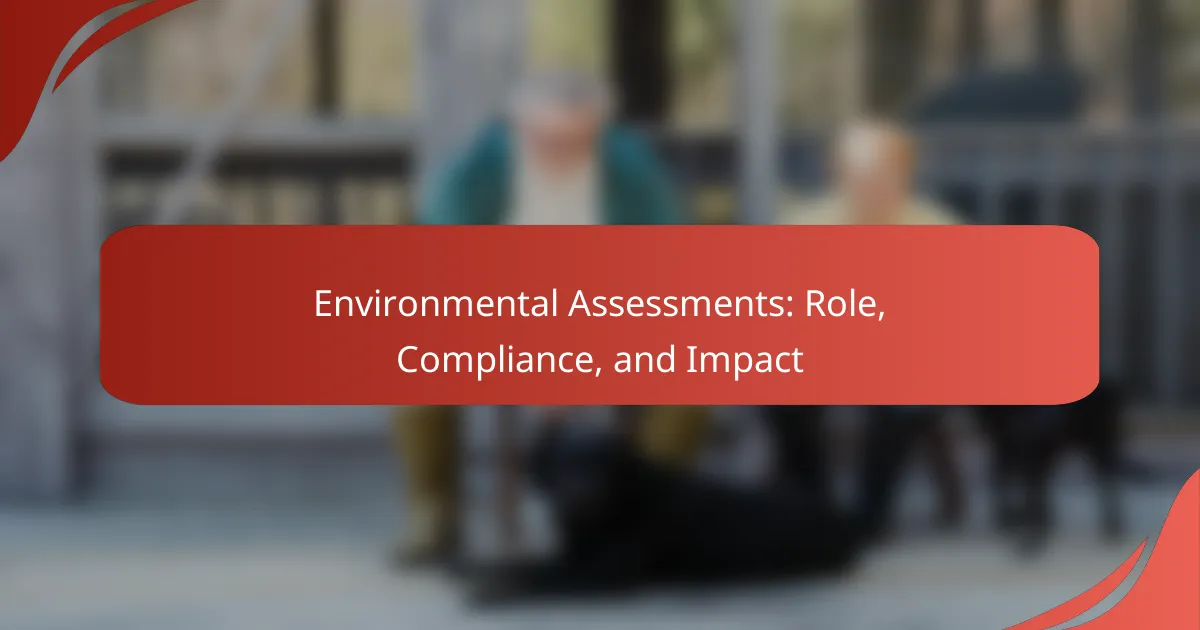Environmental assessments play a crucial role in guiding businesses towards compliance with regulations while managing risks and enhancing their reputation. By systematically evaluating potential environmental impacts, these assessments enable organizations to identify necessary mitigation strategies, ultimately promoting sustainable development and influencing operational costs and public perception.
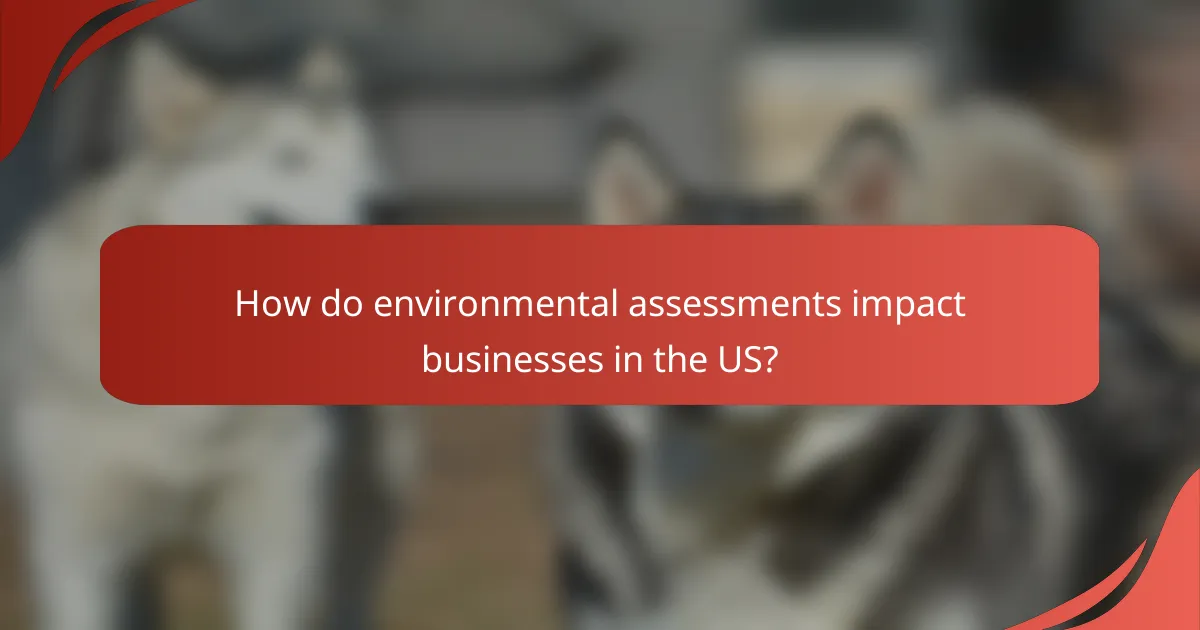
How do environmental assessments impact businesses in the US?
Environmental assessments significantly influence businesses in the US by ensuring compliance with regulations, managing risks, and enhancing reputation. These assessments help organizations identify potential environmental impacts and take necessary actions to mitigate them, ultimately affecting operational costs and public perception.
Compliance with regulations
Compliance with environmental regulations is crucial for businesses operating in the US. Companies must adhere to federal laws such as the National Environmental Policy Act (NEPA) and various state regulations, which often require thorough environmental assessments before project approvals. Failing to comply can result in hefty fines and project delays.
To ensure compliance, businesses should regularly review applicable regulations and engage environmental consultants to conduct assessments. This proactive approach helps identify potential issues early, allowing for timely mitigation strategies.
Risk management strategies
Environmental assessments play a vital role in risk management by identifying potential environmental liabilities. By understanding these risks, businesses can develop strategies to minimize their impact, such as implementing sustainable practices or investing in cleaner technologies. This not only reduces potential legal liabilities but also enhances operational efficiency.
Companies can utilize risk assessment frameworks to prioritize environmental risks based on their likelihood and potential impact. Regularly updating these assessments allows businesses to adapt to changing regulations and environmental conditions, ensuring ongoing risk management effectiveness.
Reputation enhancement
Conducting environmental assessments can enhance a company’s reputation by demonstrating a commitment to sustainability and corporate responsibility. Consumers and stakeholders increasingly favor businesses that prioritize environmental stewardship, which can lead to increased customer loyalty and market share.
To capitalize on this, companies should communicate their environmental assessment findings and sustainability initiatives transparently. Engaging in community projects or partnerships can further bolster public perception and showcase a genuine commitment to environmental health.
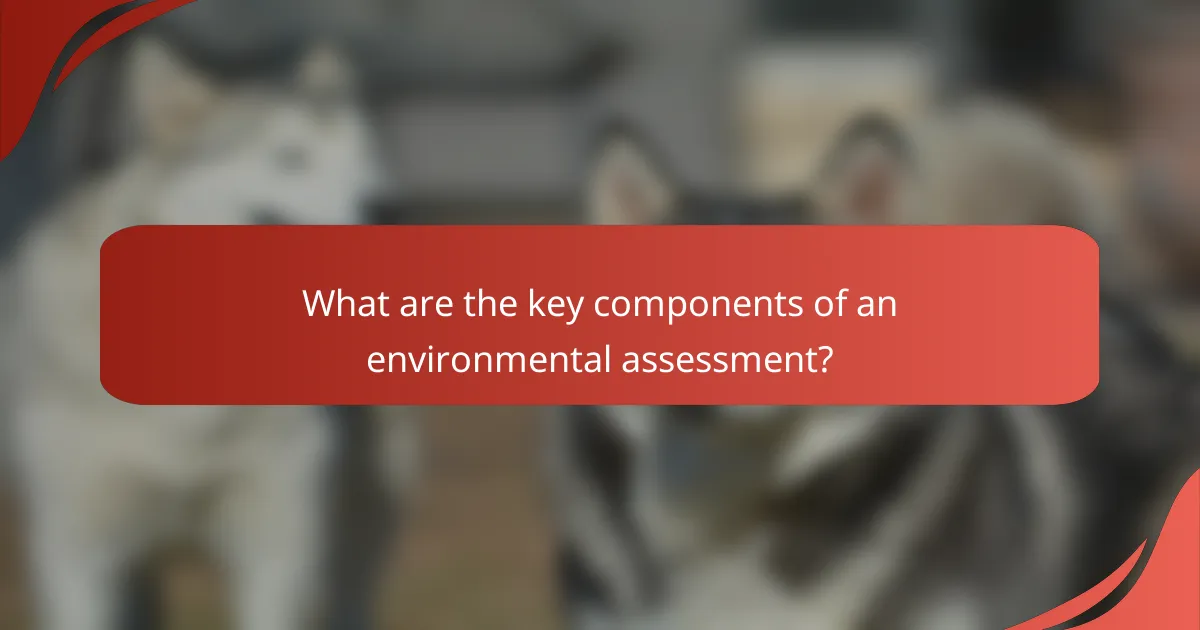
What are the key components of an environmental assessment?
An environmental assessment (EA) is a systematic process used to evaluate the potential environmental impacts of a proposed project. Key components include site evaluation, impact analysis, and mitigation strategies, all of which help ensure compliance with environmental regulations and promote sustainable development.
Site evaluation
Site evaluation involves assessing the physical characteristics of the location where a project is proposed. This includes examining land use, existing ecosystems, and proximity to sensitive areas such as wetlands or protected habitats. Understanding these factors is crucial for identifying potential environmental risks early in the planning process.
During site evaluation, data collection methods such as surveys, soil tests, and ecological assessments are commonly employed. These methods help determine the suitability of the site for the intended project and inform stakeholders about any environmental constraints that may need addressing.
Impact analysis
Impact analysis assesses the potential effects of a project on the environment, including air and water quality, wildlife habitats, and local communities. This analysis typically involves modeling scenarios to predict changes resulting from the project, allowing for a comprehensive understanding of its environmental footprint.
Key considerations in impact analysis include direct, indirect, and cumulative effects. For instance, a construction project may directly affect local wildlife while indirectly impacting air quality through increased traffic. Understanding these relationships is essential for making informed decisions and ensuring compliance with environmental regulations.
Mitigation strategies
Mitigation strategies are actions taken to reduce or eliminate adverse environmental impacts identified during the assessment process. These strategies can range from altering project designs to implementing conservation measures, such as creating buffer zones or restoring habitats.
Effective mitigation often involves collaboration with stakeholders, including local communities and regulatory agencies. Common pitfalls include underestimating the need for ongoing monitoring and failing to adapt strategies based on new information. A well-structured mitigation plan can enhance project sustainability and foster positive relationships with the community.
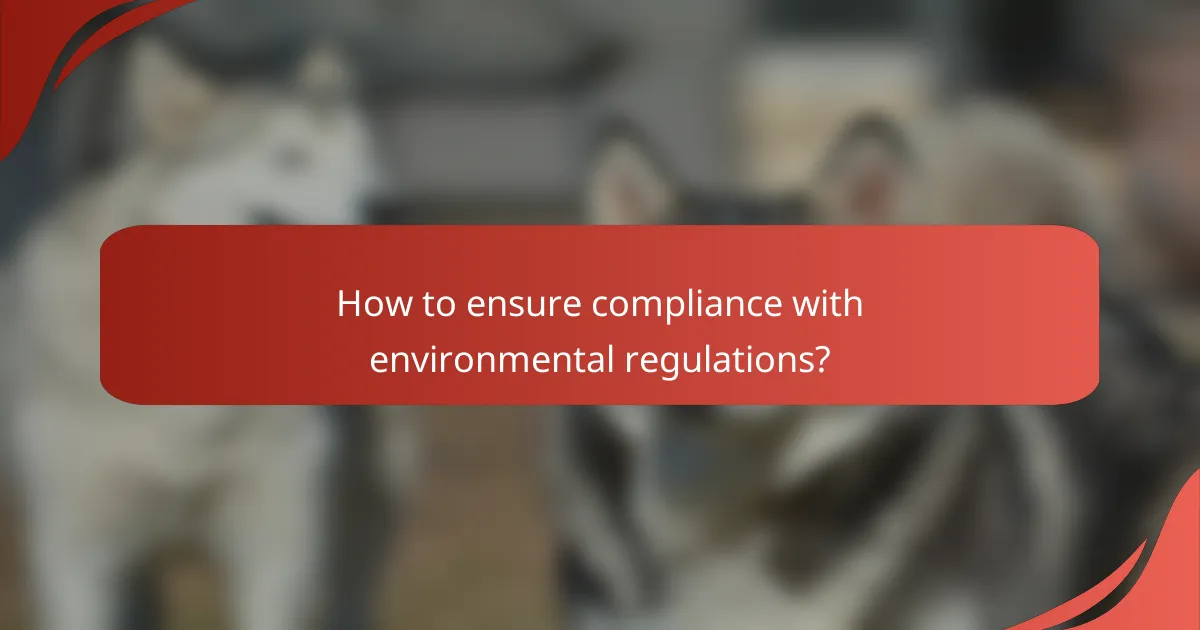
How to ensure compliance with environmental regulations?
To ensure compliance with environmental regulations, organizations must understand applicable laws and implement necessary practices. This involves staying informed about local regulations, conducting regular assessments, and engaging with experts when needed.
Understanding local laws
Understanding local laws is crucial for compliance with environmental regulations. Each region may have specific requirements regarding waste management, emissions, and resource usage. Familiarize yourself with the relevant legislation, such as the Clean Air Act or local zoning laws, to ensure adherence.
Regularly review updates to these laws, as they can change frequently. Consider subscribing to newsletters from local environmental agencies or joining industry groups that provide insights into regulatory changes.
Engaging with environmental consultants
Engaging with environmental consultants can provide valuable expertise in navigating compliance challenges. These professionals can conduct thorough assessments, identify potential risks, and recommend strategies to mitigate them.
When selecting a consultant, look for those with experience in your specific industry and a strong track record of successful compliance projects. Establish clear communication and set expectations to ensure that the consultant’s work aligns with your organizational goals.
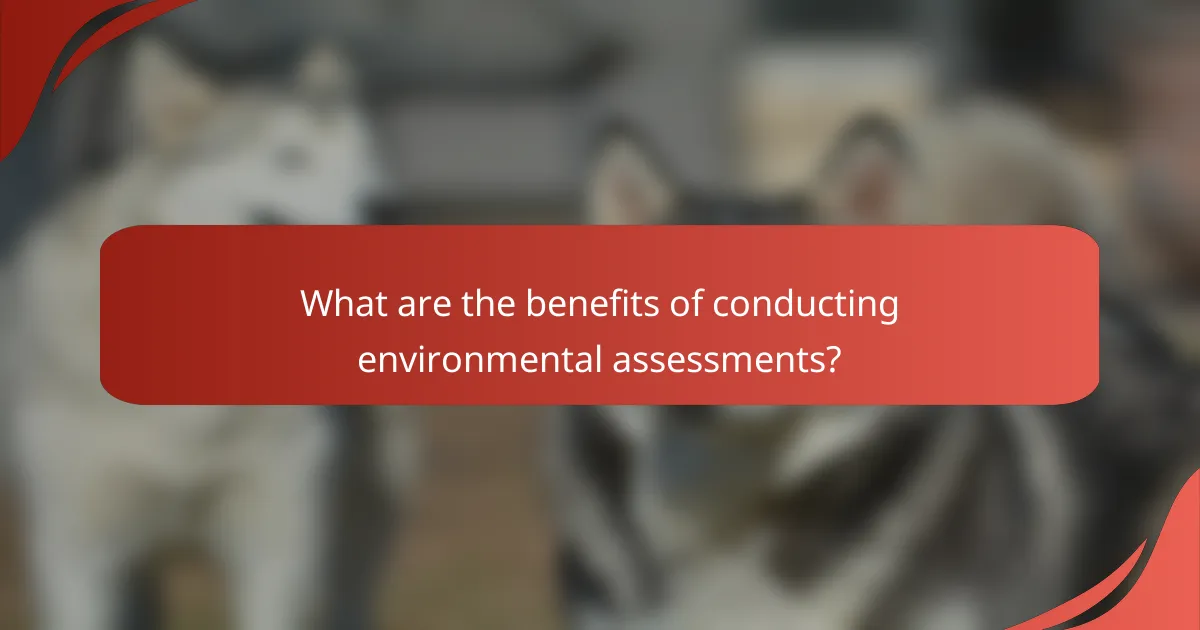
What are the benefits of conducting environmental assessments?
Conducting environmental assessments provides critical insights into the potential impacts of projects on the environment, helping organizations identify risks and improve compliance with regulations. These assessments can lead to better decision-making, enhanced sustainability, and reduced liabilities.
Identifying potential liabilities
Environmental assessments help organizations uncover potential liabilities associated with environmental damage, such as contamination or habitat destruction. By identifying these risks early, companies can take proactive measures to mitigate them, which can save significant costs in remediation and legal fees.
For instance, a property owner considering development might conduct an assessment to check for soil contamination. If issues are found, they can address them before proceeding, thus avoiding future financial burdens and regulatory penalties.
Improving sustainability practices
Environmental assessments provide valuable data that can inform and enhance sustainability practices within organizations. By understanding their environmental impact, companies can implement strategies that reduce waste, conserve resources, and promote eco-friendly operations.
For example, a manufacturing facility might discover through an assessment that it consumes excessive water. This insight can lead to the adoption of water-saving technologies, which not only lowers costs but also aligns with corporate social responsibility goals.
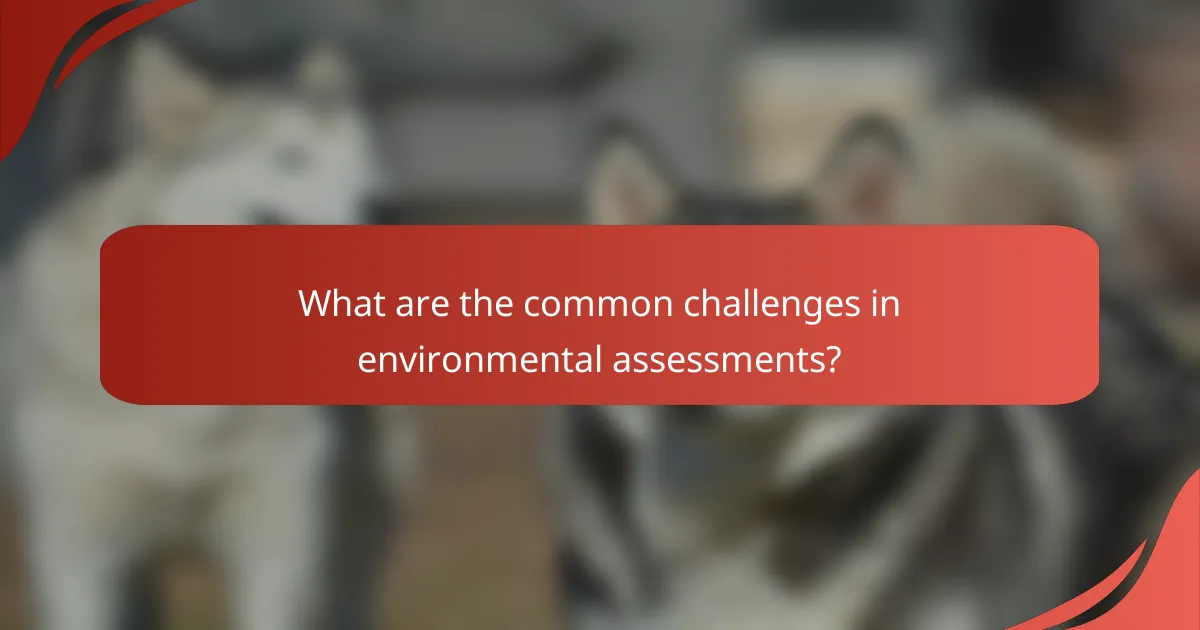
What are the common challenges in environmental assessments?
Environmental assessments often face challenges that can hinder their effectiveness and accuracy. Key issues include difficulties in data collection and engaging stakeholders, both of which are crucial for comprehensive evaluations.
Data collection issues
Data collection is a fundamental aspect of environmental assessments, yet it frequently encounters obstacles. Inconsistent data sources, lack of access to reliable information, and varying methodologies can lead to gaps in understanding environmental impacts.
To mitigate these issues, assessors should establish clear protocols for data gathering and prioritize the use of standardized methods. Utilizing technology, such as remote sensing or geographic information systems (GIS), can enhance data accuracy and coverage.
Stakeholder engagement
Engaging stakeholders is essential for successful environmental assessments, but it often proves challenging. Diverse interests and conflicting priorities among stakeholders can complicate collaboration and consensus-building.
To improve stakeholder engagement, assessors should identify key groups early in the process and maintain open lines of communication. Regular updates and inclusive discussions can foster trust and encourage participation, ultimately leading to more robust assessments.

How to choose an environmental assessment provider?
Selecting an environmental assessment provider involves evaluating their qualifications, experience, and understanding of local regulations. A well-chosen provider can ensure compliance with environmental laws and deliver accurate assessments that meet project needs.
Evaluating expertise and experience
When assessing potential environmental assessment providers, prioritize their expertise in relevant fields such as ecology, geology, and environmental science. Look for firms with a proven track record in conducting assessments similar to your project type, whether it’s for construction, land use, or industrial operations.
Consider the number of years the provider has been in business and the qualifications of their team members. Certifications from recognized bodies, such as ISO 14001 for environmental management, can also indicate a commitment to quality and compliance.
Request case studies or references from previous clients to gauge their performance and reliability. A provider with experience in your specific region will be more familiar with local regulations and environmental concerns, enhancing the quality of their assessments.
